Credits
At the beginning of the essay, I would like to give credit to our teaching team, for all the efforts they have given. Secondly, a thank you must be given to my teammate Liu Zihan, her ideas have deeply inspired me. The whole course and filming process would be indelible memories for me to preserve.
Descriptions
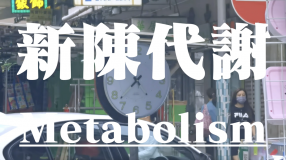
Back to the video itself, my keyword throughout the video is “Metabolism”, which implies that the buildings and people in the city are continuously reincarnating and repairing as time passes. The day market has provided energy (living necessities) to people, and in my opinion, the hawker stalls work as cells. However, as time changes, they will be outdated and will be decomposed and replaced by new kinds of stuff. We shall never entrench the old past and refuse the bright future, or otherwise, the city could hardly survive. Nevertheless, these could be the good memories stored in our minds and passed to the next generation.

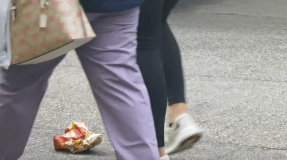
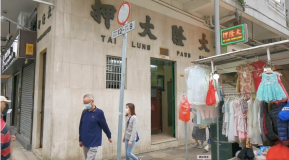
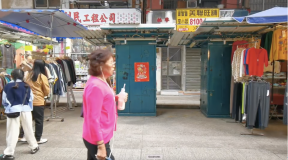
In the last part, I bring up a discussion about the dependence on the existence of a city. Scientific, religious, and Philosophical ideas are raised to answer. These ideas have different detailed explanations, but the same thing they emphasize nothing would truly end, and all of them would keep running, so to the city. As long as “humans” exist, it is no matter how the development of the city or the buildings.
There is an “easter egg” presented in the video. A famous question, Riddle of the Sphinx, is used in it. I separated the three parts, as morning, afternoon, and evening. I learnt from Anno Hideaki, that quick appear and end, bring out the message and have no impact on screen continuity. The background music I chose is Sunset Road by Reiko Takahashi. The song is typical city pop style by the Japanese, which was greatly developed during their “golden age” (Japanese Bubble Economy). At the same age, Hong Kong stood up as one of the Four Asian Tigers. I use this song intended to pull the viewers back to the “Old Hong Kong”.
Methodology
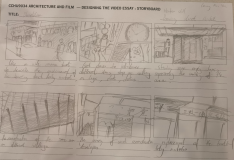
Trace back to the storyboard, the title and the main theme of the video are completely different from now. I focus on the process of “demolition.” That is kind of refusing the change and would like to preserve the whole picture of the “old Hong Kong”. It is undoubtedly that, this is a kind of “student perspective”: criticize reality, and escape from it. After a series of thinking, I was inspired by my previous learnt Chinese philosophy, Taoist (Daojia 道家) and Buddhism. A quote from the Taoist is, “Life is the continuation of the death, and death is the start of a new life.” (Shengye Sizhitu, Siye Shengzhishi 生也死之徒,死也生之始). Buddhism’s reincarnation also suggests a similar point. Hence, the main theme of my video has been “corrected”. So I started to look for some theories previously stated by the architectural academia to support my view. Luckily, I found a theory that perfectly answers me, that is “Urban Metabolism”. According to Kennedy et al. (2007), Urban metabolism is “the sum total of the technical and socio-economic processes that occur in cities, resulting in growth, production of energy, and elimination of waste” (as cited in Karvounis, 2015, P.3). In other words, it is the process of resource inputs (Karvounis, 2015, P.3). I have to admit the “Metabolism” is mainly used to describe the input of consuming resources like electricity, water, etc. However, Hawker stalls are consuming land resources too. How to plan the good usage of land resources is important. The vanishing of traditional shops may be considered as the elimination of waste, in the long term which benefits the people, and the environment. To conclude, I used three different aspects of ideas to explain, scientifically it is called “Metabolism”, religiously it is called “Reincarnation” (Buddhism), Philosophically it is called “death is the start of a new life” (莊子 Zhuangzi).
Reflection
To produce the video, I refer to some of my favourite styles. The old-style Japanese music video has inspired my cuttings of different clips. Hideaki Anno’s Evangelion series has enlightened the word layouts shown in the video. To have a chance to apply what I love and enjoy is much appreciated. Yet, I found some rooms for improvements. The most important thing is filming with a cell phone is dangerous. The quality of that is useable without adjustments. (zoom in/ slow play). As a result, some of my clips are unable to present what I intended to, which becomes pities for me.
Reference lists
Online resources
Film Service Office. (n.d.). Bowring Street. Location Library. https://fso.createhk.gov.hk/tc/location/detail.php?id=998
Riddle of the Sphinx. TV Tropes. (n.d.). https://tvtropes.org/pmwiki/pmwiki.php/Main/RiddleOfTheSphinx
No Author. (n.d.). Yidang Yigushi [One Hawker stall, One Story], Food and Environmental Hygiene Department, https://www.streetbazaars.gov.hk/tc_chi/index.html
Books
Chrysoulakis, N., De Castro, E. A., & Moors, E. J. (2014). Understanding urban metabolism: A Tool for Urban Planning. Routledge.
陳鼓應 Chan G. Y.. (2009). 莊子今註今譯 Zhuangzi Jinzhu Jinyi.
Online videos
Anno, H. (Director). (2018, July 28). Evangelion Q/3.33 (Teaser Trailer) [YouTube]. https://www.youtube.com/watch?v=pSj4skz5k4I
Reiko T. (Singer). (2018). Sunset Road [YouTube]. https://www.youtube.com/watch?v=TVfHeeuqfIo
Very attractive topic. Looking at tiny things in the city on a long time scale reveals that things themselves change, reincarnating between the old and the new. Such changes are brought about by the city as a whole. But what does the change in contrast to the same image in the video hope to convey? Also, due to the time limit of the video, focusing on only one specific item may help present the subject more clearly.
Thanks for your reply. Your advice is valued and much appreciated. “Show but not tell” is always my principle while creating this video. Indeed it is hard to balance the artistry and legibility elements in the final piece. I feel very sorry that my explanations under the video is insufficient for audience to understand the aforementioned images. In positive side, you are suggested to watch the video with the principle “The death of author”. It is strongly encouraged to share your own perspective on this issue and the video after watching. Finally, thanks for your comment and constructive advices. Have a nice summer break!